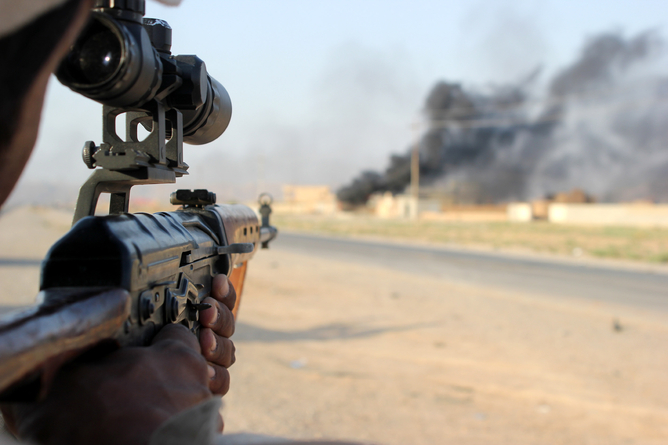Boots already on the ground as US mission creep in Iraq accelerates
- Written by Paul Rogers Professor of Peace Studies at University of Bradford

President Obama’s address, on the eve of the 9/11 anniversary, was uncompromising, the United States will “degrade and ultimately destroy” the Islamic State (IS) with “a comprehensive and sustained counter-terrorism strategy” that will extend to air operations in Syria.
It is clear that the White House has decided that IS is now a major threat to the region and the world, and that a full-scale war is the only way ahead. Indeed, since his speech the CIA has published a new assessment of IS capabilities, upgrading its paramilitary strength from 10,000 in May to 20-31,500 now. According to Associated Press the CIA puts this down partly to recent successes:
CIA spokesman Ryan Trapani says the new total reflects stronger recruitment by the extremist group since June following battlefield successes and the group’s declaration of a caliphate. He says the revised number also reflects “greater battlefield activity, and additional intelligence.
US military planners recognise that they are up against highly experienced paramilitaries, mostly Iraqi, who form the core group around the self-appointed caliph – Abu Bakr al-Baghdadi. Many of these people faced up to the devastating and uncompromising operations of General Stanley McChrystal’s JSOC special forces units that ranged across Iraq seeking out, killing, capturing and “interrogating” suspects. Thousands of suspected insurgents were killed and tens of thousands detained in Camp Bucca and elsewhere.
Survivors from that era, now part of IS, are bitter and determined – and they will be extremely difficult to defeat. The Pentagon is only too well aware of this, which does much to explain the rapid expansion in forces now under way, as well as the level of action already undertaken.
Bloomberg reported that the US has already conducted 156 airstrikes, directing 253 bombs and missiles at 212 IS targets. Moreover, to support these operations has already required 2,749 sorties involving reconnaissance, tanker, transport and many other aircraft, operating from the George H W Bush carrier battle group in the Persian Gulf and from air bases in the region.
The next phase of the expansion involves 475 more US troops going, many of them to advise Iraqi Army units down to brigade level. This brings the total US deployment up to 1,700 so far, but a significant aspect of this is that 175 of the additional troops will be going to support operations that will be conducted from an air base near Irbil, in the Kurdish region of Iraq. There were suspicions that this was going on, the significance being that the United States is once again conducting combat operations from within Iraq, for the first time in three years.
In another move, the Washington Post reports that Obama has now authorised targeted assassinations of members of the Islamic State leadership.
Thus in the space of a few weeks the operation has gone from protecting refugees to supporting offensive operations against IS units around the Mosul and Haditha dams and on to a war to kill the leaders and “ultimately destroy” the Islamic State.
International support varies. Downing Street hastily countered a statement from the Foreign Secretary, Philip Hammond that the UK would not be involved in air operations in Syria and President Hollande said during a visit to Baghdad that France would offer support . The Russians, meanwhile, have sharply criticised the idea of air strikes in Syria without a UN Security Council debate UN Security Council debate and support from across the Middle East has been highly variable, some of it decidedly tepid.
While some governments there are genuinely concerned at the rapid growth of the Islamic State they are only too well aware of the risk that Islamist propagandists can easily represent the US action as yet one more “far enemy” attack on the Islamic heartland, aided by corrupt regimes that remain close to Washington. Moreover, the Saudis have the added concern that defeating IS may requires substantial co-operation with Iran, a particularly bitter pill to swallow.
Over all of this, there is one other issue that is very largely missed, the role of Special Forces in the new Iraq/Syria War. There are unconfirmed but highly credible reports that US Special Operations Command already has Special Force units on the ground in Iraq, some of them involved directly in combat alongside Kurdish Peshmerga units and US Today reports the view of an unnamed but senior US Air Force commander saying that it will be essential for US air strikes against targets in Syria to have Special Forces on the ground.
The blunt truth is that “boots on the ground” is already the order of the day and that the mission is accelerating rather than creeping. We are now at the start of another war – and one that will most likely be measured not in days or months but in years.

